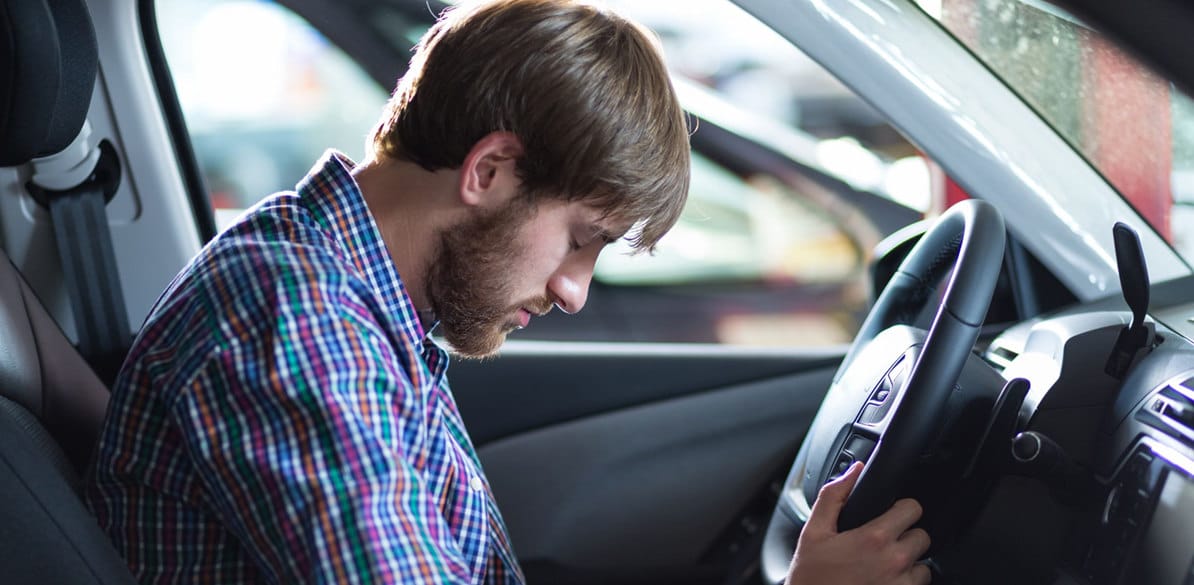Sleep and fatigue, and its influence in driving

Sleep
Sleep is a varied, complex phenomenon, at which the human being spends almost a third of his life, but that to about 13 million Spaniards will cause them problems at some time.
Sleep disturbances are in many countries the leading cause of death from traffic accidents, either for lack of rest, or for the daytime somnolence that causes the “syndrome of sleep apnea-hypoapnea.”
One out of three drivers has felt some time bothersome sleep while driving.
From 50 years of age, the need for sleeping at night is lower, but it is more difficult to control sleep at daytime.
It has been demonstrated that people tolerate that their sleep period is cut gradually, in a maximum f one hour and a half, but when the limit of the five hour and a half rest is reached, they start to feel bad.
There is a strictly necessary sleep, close to six hours.
Now, young people is deprived of many hours of sleep, since, in the weekend they can spend a night without sleeping and rest the day after.
This situation causes a loss of the stability in the sleep-wakefulness cycle, with serious physical and mood consequences in the next days while the young subject is awake, with the risk of traffic accident.
Insufficient dream causes neurocognitive changes such as excessive daytime somnolence, altered mood, and a greater risk of work-related and traffic accidents.
People with “chronic insomnia” cause twice and a half more accidents that those which sleep well. If a copious meal or excess of work are added, the problem worsens.
Somnolence implies a first-order risk factor, and most of the causes that originate can be prevented.
The driver should always be ready for responding adequately to an unexpected event or situation that can be “borderline”, and sleep disturbances are disabling for it.
Fatigue
It reduces the capacity for attention, favors mistakes when making maneuvers, and forces to assume more risks. It is calculated that between 20 and 30% of the accidents are due to fatigue.
- Causes: Most traffic accidents occur for the joining of several factors, particularly leading under the effects of alcohol, fatigue, inadequate speed for the traffic circumstances and distraction. It is known that near 40% of the drivers do not rests when traveling after three or more hours driving.
Fatigue is the end result of very varied circumstances such as somnolence, excess work, use of drugs, stress, changes in work shifts… Somnolence is among the five leading causes of accidents with victims.
Fatigue increases with heavy meals, inadequate clothes, excessive heat and light in the central hours of the day, high number of hours driving or working, routine when performing many times the same route, monotony of large straights
There are clinical conditions with dysthymia and chronic fatigue, characterized because the patient complains of tiredness, lack of energy, fatigue and somnolence, that are associated with impairment of the mood, with lack of interest.
Fibromyalgia is more frequent in women and is characterized by pain and trunk and limb rigidity, and can be associated with sleep disturbances. They are generally complaining, tired female drivers. - Symptoms of fatigue: The driver can hardly concentrate on the road and carries out almost unconscious maneuvers, with lower perception of signals, lights, sounds, distances, and time.
The quantity, quality, or efficacy are reduced in the maneuver execution and the reactivity.
Unpleasant personal states arise, such as boring, anxiety, instability, dulling, and greater acceptance of the risk.
Excessive fatigue causes heavy vision with almost constant blinking, headache, tinnitus, feeling of arm and feet numbness, need for moving in the car always associated to a higher or lower degree with loss of attention, and need for rubbing the face. In this situation, the driver must stop and to rest.
Sleep is a varied, complex phenomenon, at which the human being spends almost a third of his life, but that to about 13 million Spaniards will cause them problems at some time.
Sleep disturbances are in many countries the leading cause of death from traffic accidents, either for lack of rest, or for the daytime somnolence that causes the “syndrome of sleep apnea-hypoapnea.”
One out of three drivers has felt some time bothersome sleep while driving.
From 50 years of age, the need for sleeping at night is lower, but it is more difficult to control sleep at daytime.
It has been demonstrated that people tolerate that their sleep period is cut gradually, in a maximum f one hour and a half, but when the limit of the five hour and a half rest is reached, they start to feel bad. There is a strictly necessary sleep, close to six hours.
Now, young people is deprived of many hours of sleep, since, in the weekend they can spend a night without sleeping and rest the day after. This situation causes a loss of the stability in the sleep-wakefulness cycle, with serious physical and mood consequences in the next days while the young subject is awake, with the risk of traffic accident.
Insufficient dream causes neurocognitive changes such as excessive daytime somnolence, altered mood, and a greater risk of work-related and traffic accidents.
People with “chronic insomnia” cause twice and a half more accidents that those which sleep well. If a copious meal or excess of work are added, the problem worsens.
Somnolence implies a first-order risk factor, and most of the causes that originate can be prevented.
The driver should always be ready for responding adequately to an unexpected event or situation that can be “borderline”, and sleep disturbances are disabling for it.
